Introduction and model history
This new 2024 Hyundai SANTA FE is the fifth-generation of Hyundai’s popular seven-seat family SUV, which has been around since 2001. It’s changed a lot over the years, and this is the first generation that really pushes the SANTA FE into more premium price territory.
At 4.83m long and 1.9-metres wide without the side mirrors the SANTA FE is quite a bit shorter than a BMW X5 and Kia EV9, and a fraction longer than a Peugeot 5008. You can choose between a hybrid powertrain (that you can’t plug in, but which has electric power to boost performance and efficiency) or the plug-in hybrid model that offers an official pure electric range of 33.6 miles.
We’re focussing on the latter, here, as we’re all about the electric running at Electrifying.com… The clue is in the name, after all.
There are many and varied rivals for the SANTA FE PHEV. Arguably, a chief rival is the all-electric Kia EV9, which is a similar size, utilitarian nature and even has a similar brash presence on the road, but is pure-electric and substantially more expensive, and there’s also the smaller, pure-electric Mercedes EQB. The Kia Sorento PHEV is its ultimate plug-in hybrid nemesis, and there’s also Peugeot 5008 (also available as the e-5008 pure electric seven-seater), Volvo XC90 and Land Rover Defender PHEV.
Range, battery and charging
The SANTA FE gets a 13.8kWh lithium-ion battery, which gives it an official range of 34 miles. Not terrible, but also not brilliant. The Peugeot 5008 PHEV manages between 39- and 55-miles of electric running, thanks to a bigger battery, so the Hyundai is far from the longest-range PHEV you can buy.
Having said that, we saw around 25 miles of real-world electric range in the SANTA FE (expect that to be more like 20 miles if you’re using it on the motorway, especially in cold weather), which is still good enough to cover most people’s routine daily mileage, so you shouldn’t need to rely on the 1.6 turbocharged petrol engine too often. You can also choose to hold the charge in the battery (which makes a lot sense if you’re starting off with some motorway miles and heading into town, later in the journey), and you can choose from a standard automatic Hybrid mode that shuffles power sources as the car sees fit, or you can put the Santa Fe in EV mode provided there’s enough battery left.
Charging is fairly slow, at 3.6kW, but the reasonably small battery will still be fully charged from empty in under five hours if you use a dedicated car charger, or a normal domestic three-pin socket will do the same in around seven hours. Unfortunately, the SANTA FE Plug-in Hybrid doesn't offer vehicle-to-load (V2L) charging, as the fully electric Hyundai models do. This feature allows you to charge any electrical device from the high-voltage battery, and it feels like it'd still be a really useful feature for the sort of active lifestyle that the typical SANTA FE buyer will have - despite the relatively small battery.

Practicality and boot space
The SANTA FE is just a big box of delightful practicality. Everything from the rugged yet quite pleasant-feeling materials and aesthetics, to the sheer space and seating versatility, makes this a useful car to have around.
There’s tons of space in the front, plus cubbies galore with dual glove boxes, big door bins, a large, open shelf area beneath the centre console (with rubberised finish to stop your stuff from sliding around) and a big centre storage area under the armrest. Visibility is surprisingly decent, too, thanks to the plentiful glass area and upright pillars.
The middle-row seats slide and recline in a 60/40 split, and have tons of space even for a couple of very tall adults. It’s an east one-touch button to have the seats tilting and sliding forwards for reasonable access to the third row, although I found it annoying that it was then a two-handed job to return the middle-row seat to a normal position.
When you’ve climbed into the third row, there’s actually room for an adult to sit in reasonable comfort provided you don’t mind having raised knees; the floor is quite high and there’s not much foot space. Even so, an average-sized adult will be happy back there, especially as there are cup holders, charging points and climate control in the third row as standard – just as there is for those in the middle row.
That third row of seats is also really easy to flip up when you want them, and there’s still enough room for a single buggy or a couple of soft bags even with all seven seats in use. Drop them down for the five-seat mode that most buyers will probably keep the SANTA FE in, most of the time, and you get a pretty vast 621-litres of boot space. That should be enough for pretty much anything that family life routinely involves, unless your kids all play the double bass or tuba. If they do, you’ll be needing a van for those band practice taxi runs, which is about the only thing more practical than the SANTA FE.
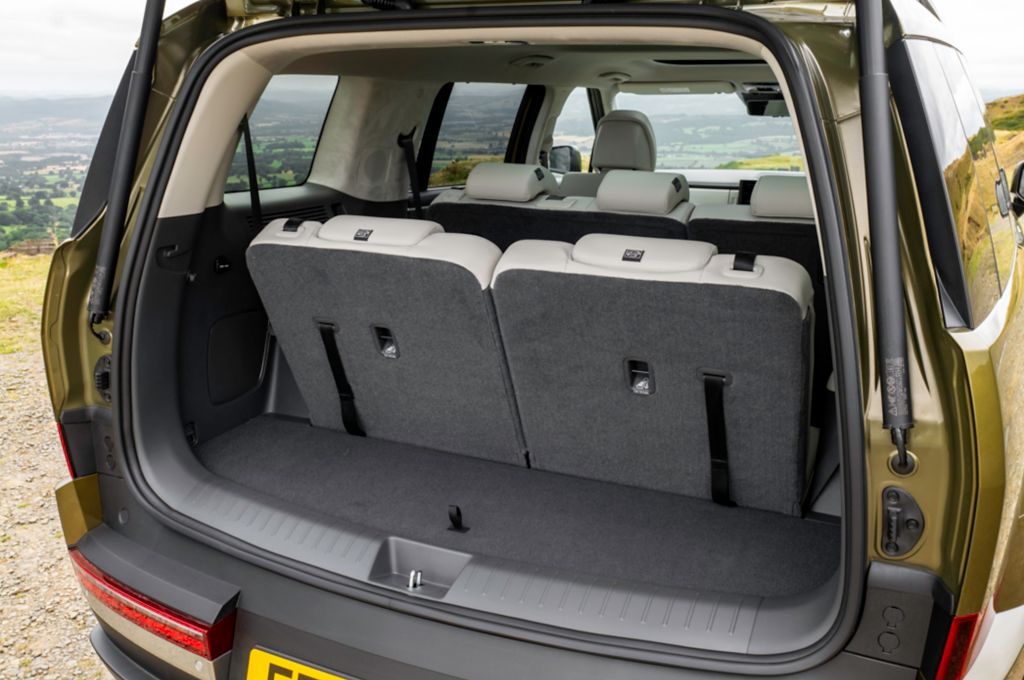
Our only big gripe with the boot space in the big Hyundai is that there’s no underfloor storage for the cables, although most owners will just keep the cable at home – or wherever the routine charging happens - so it’s not a deal breaker. There’s no stowage space for the loadbay cover, though, which is annoying as it means you have to store it somewhere while the seven seats are in use. Unlike the Peugeot 5008, which has a cubby under the floor with designated stowage for the loadbay cover.
Mind you, the SANTA FE has a significant advantage over the Peugeot in that it has Isofix fittings on the third row of seats, as well as two pairs of Isofix in the second row, for a total count of four pairs of Isofix. Families of multiple small children may well appreciate that.
Obviously, you can also drop the second and third row of seats completely flat, which leaves more than 2-metres of space. I’d know, as I slept in the back of the SANTA FE on Hyundai’s UK launch. Not that I’m recommending that as a permanent solution, but I can definitely confirm that it is roomy back there. There’s no en-suite, though – maybe that’s a job for the facelift…
Towing capacity will be a big disappointment for many SANTA FE fans. In past generations, the SANTA FE has been a favourite with caravan- or equine fans, thanks to a beefy towing capacity, matched with decent value and excellent reputation for reliability. Sadly, this generation can only tow 1010kg in PHEV guise (despite being all-wheel drive), and 1110kg in Hybrid guise – regardless of whether you choose the two-wheel drive or all-wheel drive model. Ho hum… At least you can spec a factory-fit towbar for light trailers, or for bike carriers.
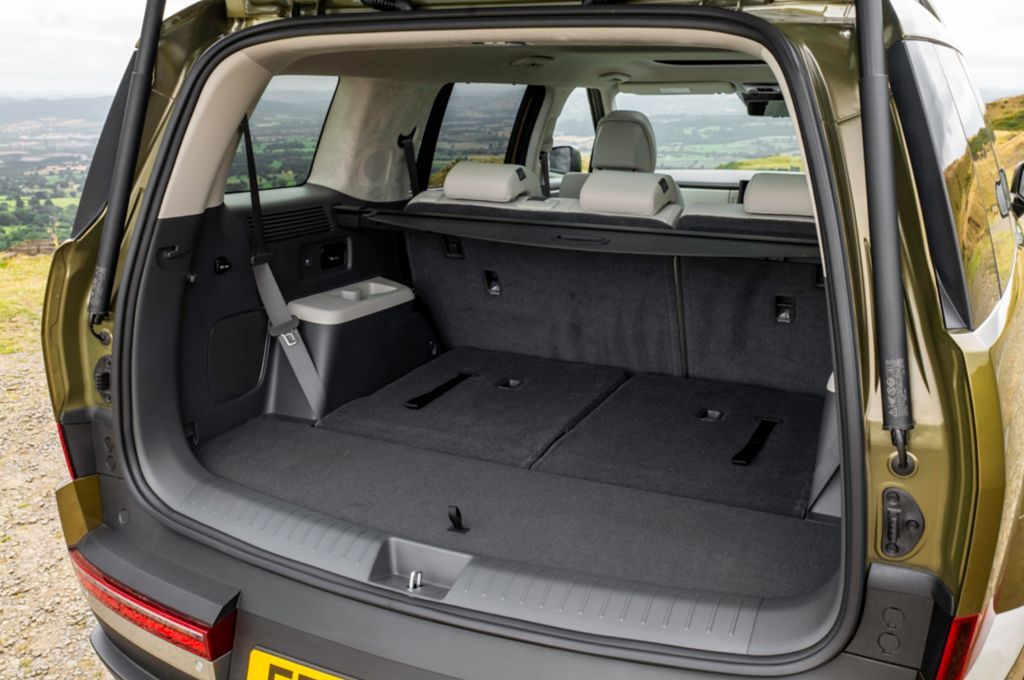
Interior, Design/Styling and Technology
The SANTA FE’s very blocky exterior styling may not be to everyone’s tastes – it’s one of those Marmite cars, I suspect; I rather like the front of it but am a bit uncertain about the sheer cliff face of the boot, even though I like the practicality that the boxy shape brings. I’ll take that over your annoyingly impractical coupe-SUVs, any day…
The interior’s very easy to like, with bluff horizontal lines bringing echoes of the posh-but-rugged Land Rover Defender; an observation that runs through the whole of the SANTA FE, in fact. Infotainment comes in the form of a curved, 12.3-inch touchscreen that’s pretty easy to use and that has all the features you want including nav, online connectivity, over-the-air software updates, and wireless Apple CarPlay and Android Auto. There are also two wireless phone charging pads, which is really usefu, on Ultimate and Calligraphy models, while entry-level Premium makes do with one.
It's a very good system, although we do wish that it were easier to control the driver assist systems. Even with the programmable shortcut button on the steering wheel set to take you directly to the relevant menu, you still have to prod through a few menus and fairly small icons to access control of the lane-keep assist, speed limit warnings and other features.
One really cool tech feature is the ‘Blind Spot View Monitor’, which is standard on all but the Premium model. When you indicate, it beams a camera shot of the side of the car to your 12.3-inch digital driver’s display, so that you can see if there’s a cyclist, another car, or any other hazard that you might have missed in the side mirrors. Clever stuff.
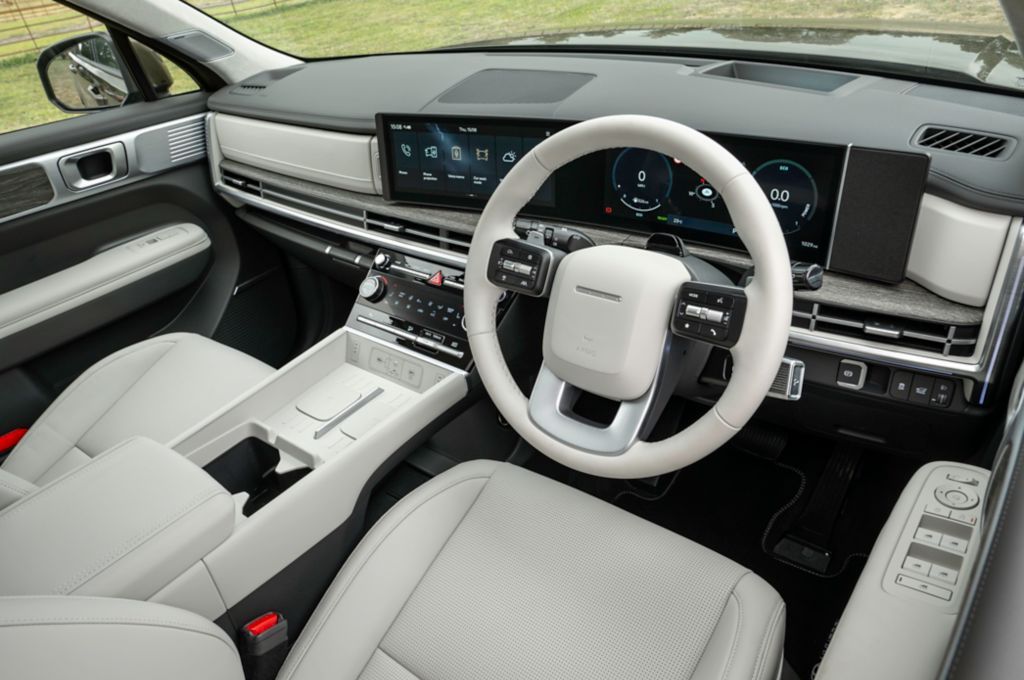
Motors, Performance and Handling
The SANTA FE comes on self-levelling suspensions, regardless of which model you choose, and it is very good at keeping thing comfy and controlled. You do notice the body leaning a bit through corners, but the steering always gives you a good sense of what’s going on and this is just a really confident, pleasant car to drive. You can stick it in Sport mode for heavier steering and to make the six-speed automatic gearbox hold onto the revs from that 1.6-litre turbocharged petrol engine a bit longer, and actually it’s surprisingly fun to drive the big Hyundai down a good road with a bit of gusto.
Ride comfort around town and at lower speeds is a bit lumpy and unsettled if you find a very rough, patched-up bit of road, and the engine gets noisy if you really rev it hard, but generally I absolutely loved the way the SANTA FE felt so unflappable and controlled, regardless of how it was being driven.
After all, this is a big, cushy SUV and it’s at its best when you’re wallowing along enjoying the high-set driving position, decent visibility and generally calm, confident demeanour. It also shuffles between electric and petrol power quietly enough that you might not even notice a lot of the time, or you can keep it in EV mode, when it’s more than fast enough to do motorway speeds.
The PHEV comes with all-wheel drive as standard (you can have the full hybrid SANTA FE with two-wheel drive or four-wheel drive), and you’ve got a few Terrain settings to choose from, so while we never did anything more troublesome than a damp grass field, the Santa Fe’s clearance and clever traction systems should make light work of rutted farm tracks and muddy fields. Still, this is a road-oriented SUV, and options like the Land Rover Defender will be a far better bet if you do have serious towing or off-roading in mind.
Cleverly, the brake regen’ in the SANTA FE is very adjustable via the paddles on the steering wheel, which allows you to toggle through three different levels, or to turn it off. You can also turn the adaptive regen’ function – which automatically increases the brake regen’ to keep a safe distance from the car in front, and even respond to speed limits and approaching junctions – off or on via the paddles.
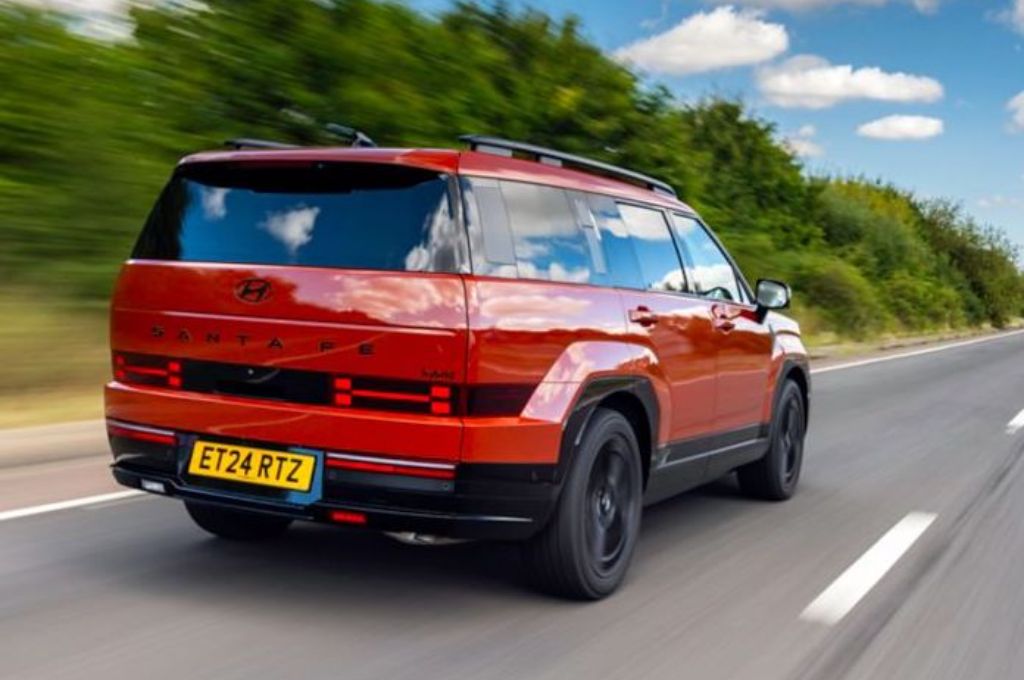
Running Costs and Pricing
The SANTA FE PHEV starts from just under £52,000 for the Premium, which gets healthy equipment list including keyless entry, heated front seats, leatherette upholstery, sinblinds in the rear windows, parking sensors and reversing camera – as well as that touchscreen system with all the features we’ve detailed above. Our pick of the range is the Ultimate at just over £55,000, as it adds two-way electric lumbar adjustment for the driver, heated seats for those in the middle row, Bose sound system, semi-autonomous parking system and a dual sunroof. Calligraphy costs nearly £58,000 and steps up with Nappa leather and lots of style upgrades, plus a nifty hidden handle in the c-pillar that helps you get access to the roof when you’ve got a tent, luggage box or any other roof-mounted gubbins up there.
That may actually seem like really good value next to the Kia EV9 and Land Rover Defender PHEV, but the Peugeot 5008 PHEV and electric e-5008 make the Hyundai look rather expensive, whether you’re comparing list price or finance deals. The Peugeot will also be cheaper on Benefit in Kind tax for company car users, as it has a longer electric range, although the Santa Fe PHEV is still hardly expensive on that front at roughly £200 per month (for the tax year 2024/25) in BiK tax depending on how you spec the car.
The SANTA FE does impress with its five year, unlimited mileage warranty, which is usefully better cover than you get in most plug-in hybrid rivals. The battery system is covered for eight years, and 100,000 miles.
Verdict
The Hyundai SANTA FE is a surprisingly characterful, and really very excellent seven-seat family SUV. It does have the feel of a premium car, it drives well and is incredibly versatile and spacious. The only things that have seen us knock it down to eight stars is that we’d like longer-range electric running, and ideally a fully electric version, too. It’s also a tad pricey next to the Peugeot 5008, and the towing capacity is a real disappointment. Even so, if you don’t need to lug a caravan, the SANTA FE is a truly brilliant family car and one of our absolute favourite seven-seaters, and we even like its divisive styling.
Like the Hyundai SANTA FE? Try these...













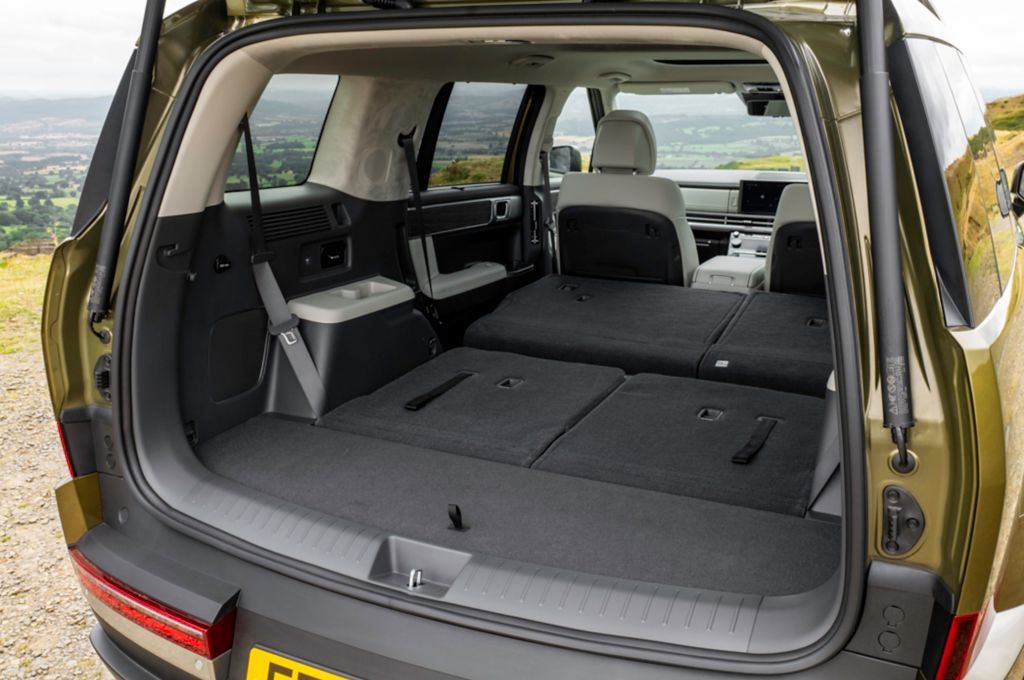

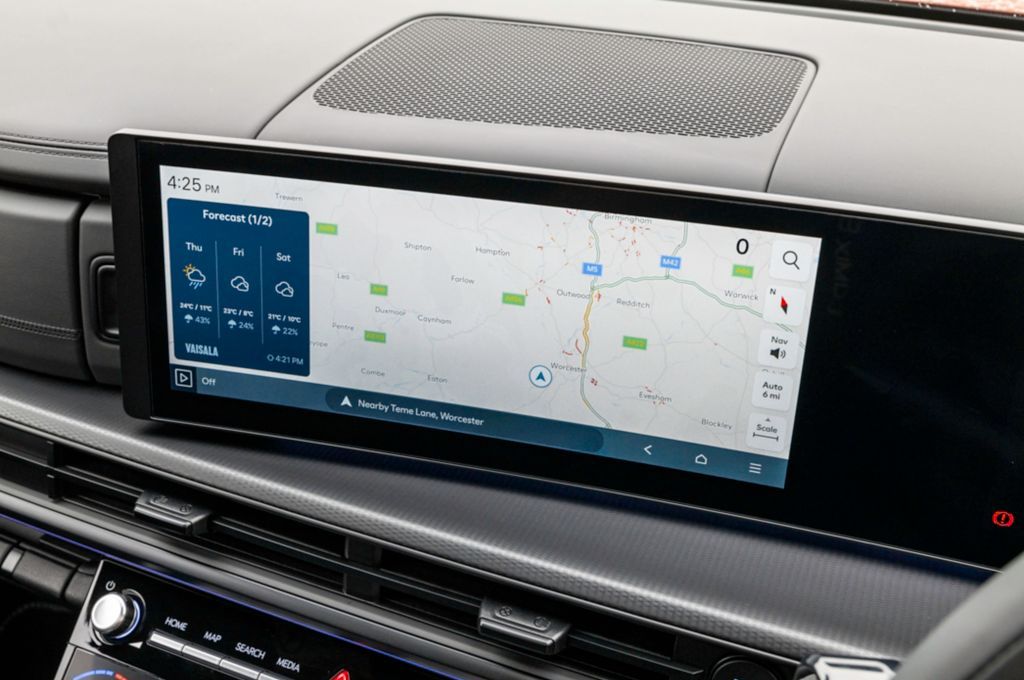
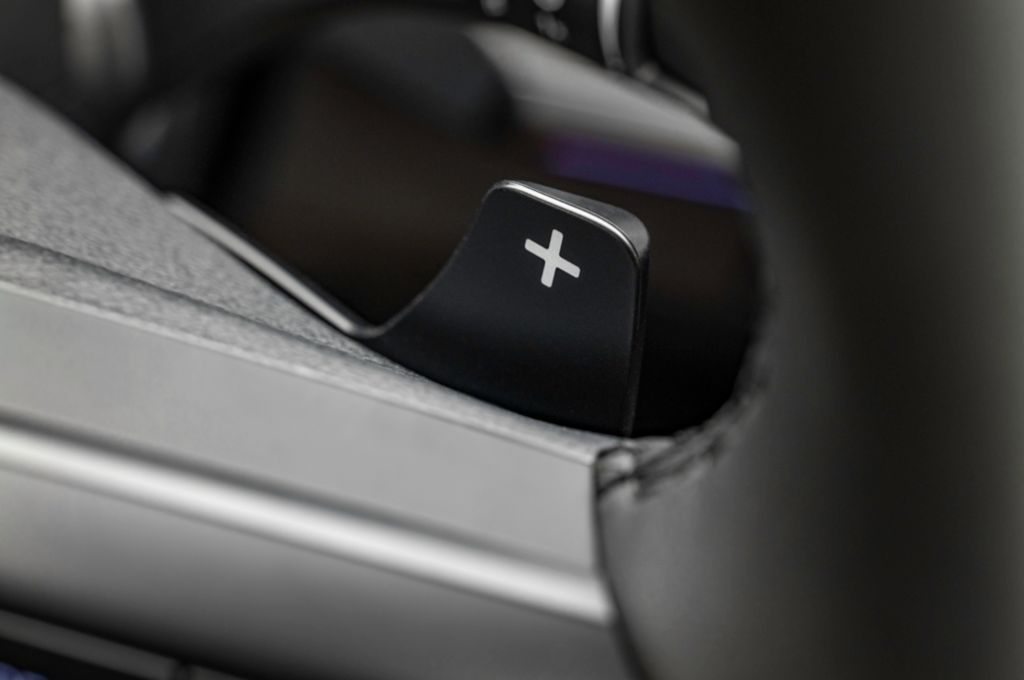



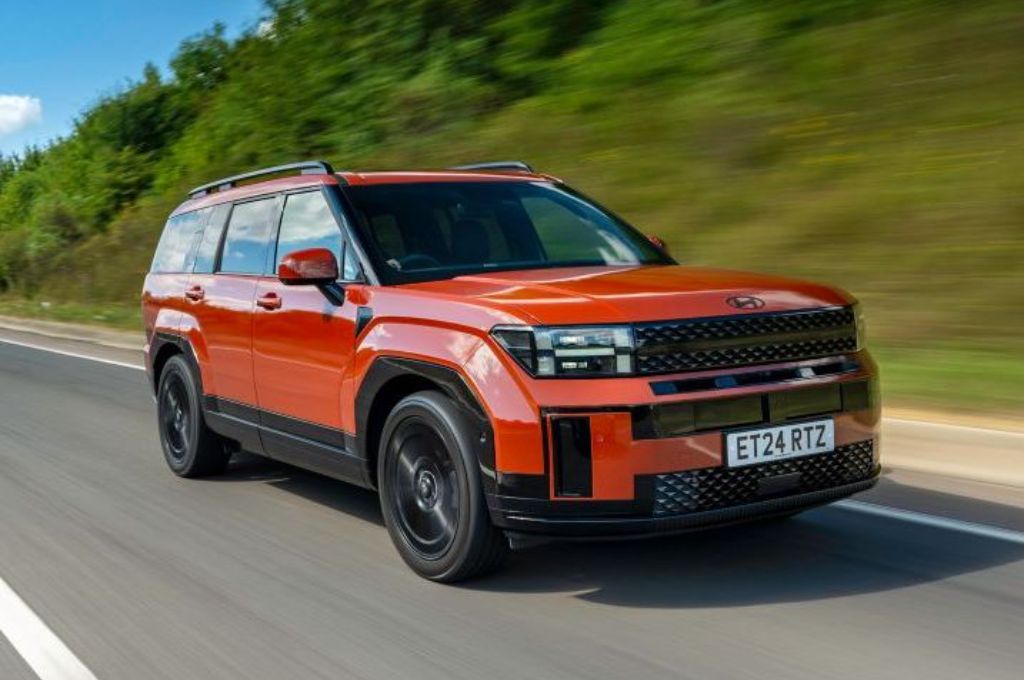










 PV5_Cargo_Key visual image_2.png?width=300&height=185)

